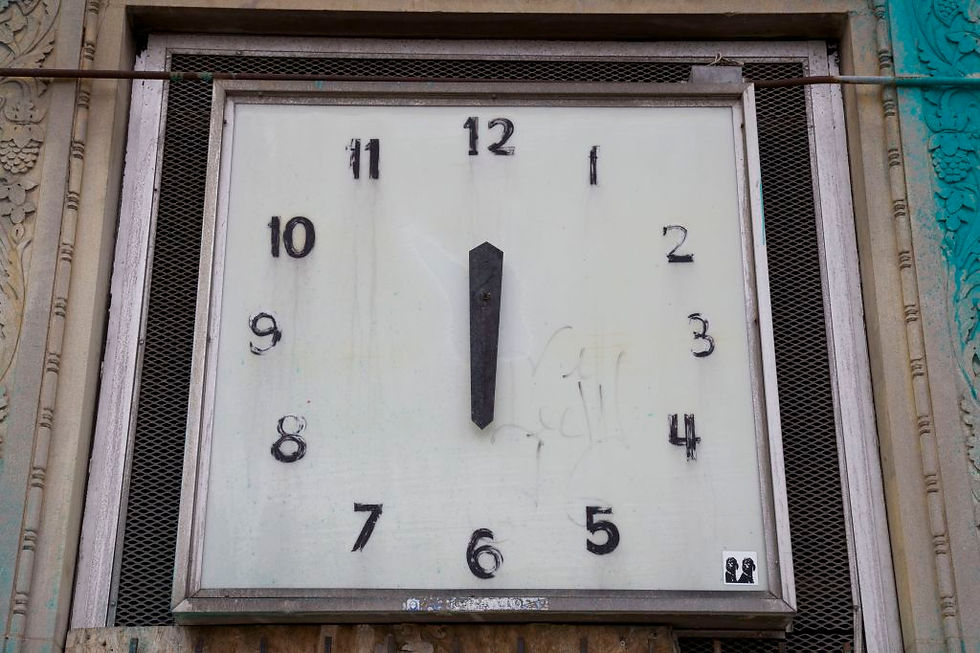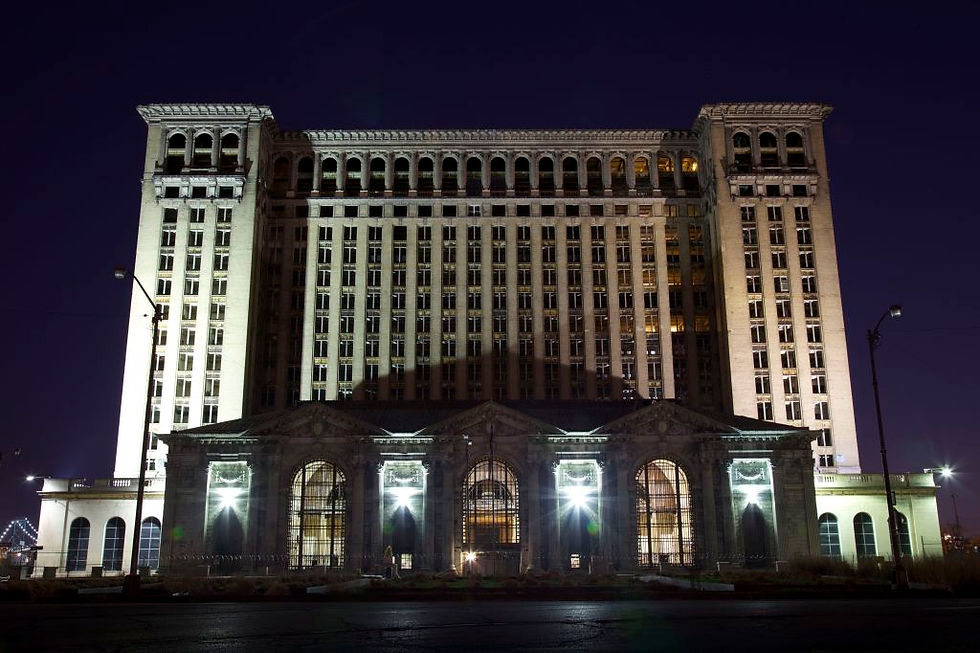Chronopolis: Detroit’s time zones
- Paul Dobraszczyk
- May 8, 2015
- 3 min read

The Imagination Station opposite Michigan Central Station
In a peculiar instance of art imitating life, I happened to read J. G. Ballard’s 1960 short story ‘Chronopolis’ during a recent stay in Detroit. In Ballard’s tale, set in a future city (the Chronopolis of the title), the population have completely abandoned the notion of sequential time, resulting in a city that is ‘effectively an enormous ring, five miles in width, encircling a vast dead centre forty or fifty miles in diameter.’ Hiding his own interest in the now forbidden timepieces of his ancestors, the central character Conrad sets off on a journey into this abandoned city, meeting the renegade Marshall, and restarting the city’s clocks once again. Typical of Ballard’s writing, this seemingly fantastical story was eerily prescient of the fate of the city in which I read it. Detroit’s decline is always narrated with shocking statistics and chronological landmarks: the riots/rebellion of 1967 which precipitated the flight of Detroit’s white residents to the burgeoning suburbs; the even-more catastrophic exodus (250,000 residents) in the wake of the collapse of the housing market in 2008; and the city’s declaration of bankruptcy in 2013. Recent commentary on Detroit has tended to emphasise two seemingly opposing temporal conceptions: the city as a place of vacant land and ruins that have succumbed to the slow rhythms of nature; or the city as still waiting, in the words of its motto, to rise from the ashes.

Clock in the former Cass Technical High School. Photograph by Andrew Moore, 2010
Both of these conceptions result from an understandable desire to apprehend the meaning of Detroit. As a city with less than 40% of its former inhabitants and with nearly one third of its vast area (138 square miles) now vacant land, Detroit seems to confound everything we expect of a city. As the photographer Andrew Moore put it in his 2010 book Detroit Disassembled, there’s a sense in Detroit that ‘the past is receding so quickly that time itself seems to be distorted’ – perhaps nowhere better pictured than in Moore’s own image of a half-melted clock in the former Cass Technical High School (now demolished). Like other photographers of Detroit’s ruins, Moore isn’t convinced that the city will rise again; rather, it is nature that is Detroit’s true engineer: ‘Janus-faced’, it ‘renews as it ravages this shadowed metropolis’.

The Heidelberg Project on Detroit’s east side.
At the same time, people (mainly young white professionals and creative types) are moving back into the city’s core: the billionaire Dan Gilbert has bought up dozens of formerly vacant buildings downtown; while the surrounding areas of Midtown, Corktown and Eastern Market are seeing new apartments being built and boutique shops opened. Here, the talk is of renovation and renewal, of productive forward-looking time regained after the blank wasted time of abandonment.

Clock above the entrance to the abandoned CPA Building on Michigan Avenue, Corktown
Can both of these time zones exist in the same city? Indeed, they can and do – and more besides. At Tyree Guyton’s world-famous Heidelberg Project on Detroit’s east side, a hand-painted clock (fixed on just after 3.45) is fastened to a pole overflowing with decrepit soft toys and wooden crosses: a time that pinpoints, abet allusively, a past tragedy (all over the city, poles covered in toys signify and memorialise sites of murders). Meanwhile, in Corktown on the near west side, the one remaining hand on the clock over the entrance of the abandoned CPA building points forever at the number 6. Looming just across the road, Detroit’s most iconic ruin – Michigan Central Station – used to contain within it a clock that stopped forever in the mid-1960s at one minute to seven, signalling the beginning of the end for this architectural behemoth.

Former Michigan Central Station, Corktown
In Detroit of all places – once the epicentre of clock-based time in the Fordist mass production of cars – these frozen clocks seem to mock any attempt to temporalize the city. What is the past, present or future if time has forever stopped? The answer Ballard gives us in ‘Chronopolis’ is typically ambiguous: if we abandon time, we can never get it back as it once was. This seems to be what makes Detroit such a troubling (yet exhilarating) city: its future is now radically unknown.



Comments